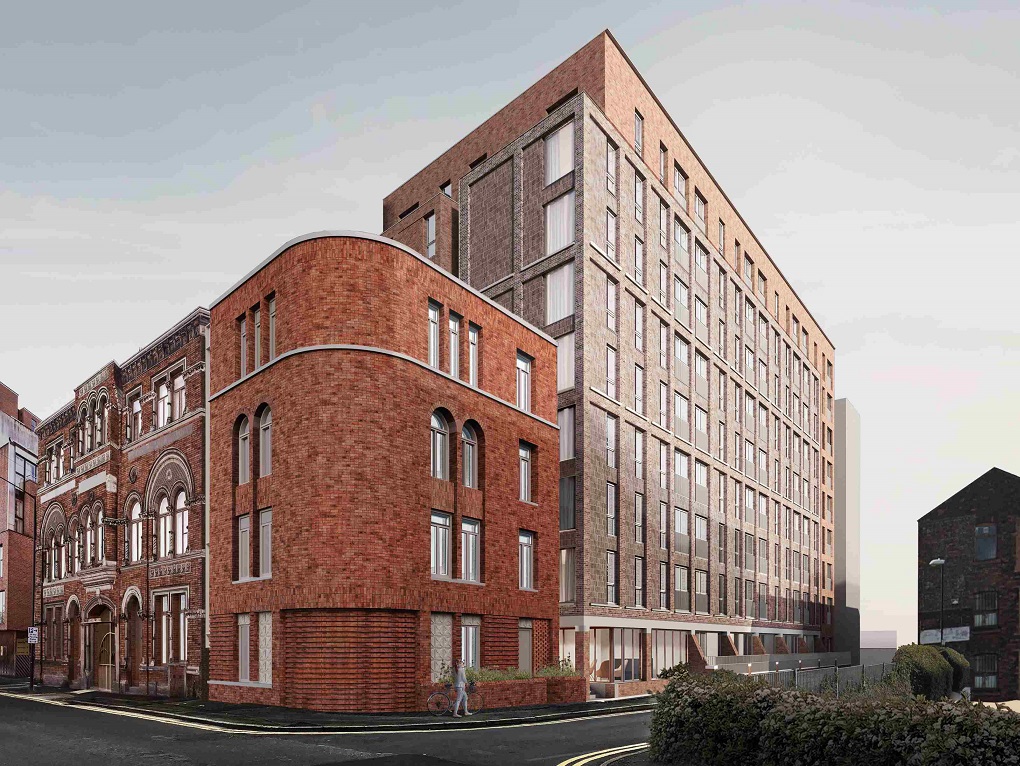VIDEO | Leading with nature in the built environment
Green infrastructure, sustainable development and the need for net zero policies were key topics at a discussion hosted by LUC and Civic Engineers.
The “Leading With Nature” roundtable focused on the creative ways in which developments can leverage nature to make a scheme not only better for the environment, but better for future clients and tenants as well.
The participants were:
- Sam Evans – head of natural environment at Greater Manchester Combined Authority
- Euan Hall – chief executive at The Land Trust
- Cllr Eve Holt – strategic director at GM Moving and councillor with Manchester City Council
- Tom Jonson – director of landscape architecture at LUC
- Phil Marsden – project director at Muse Developments
- Aisling McNulty – development director at Bruntwood Works
- Paul Morris – director at Civic Engineers
- Stuart Rogers – director at Faithful + Gould
The discussion was hosted by Place North West deputy editor Julia Hatmaker and held at the Manchester office of Civic Engineers. It was sponsored by both Civic Engineers and LUC.
Civic Engineers is a civil, structural and transport engineering practice focused on having a positive impact on the environment and enabling people to lead happier and healthier lives.
LUC is an award-winning environmental consultancy providing planning, impact assessment, landscape design, ecology and geospatial services to a wide range of public and private sector clients.
Watch the roundtable in the video at the top of this article. You can also watch the video on Place North West‘s YouTube channel.
Key talking points
Aisling McNulty: “Looking at biodiversity and how you can improve climate resilience within the city is really important to us. There’s a massive social benefit to green spaces. Our customers really benefit from being in spaces which got natural materials in them – not just green materials but natural finishes. We are really seeing that come through in our feedback.”
Euan Hall: “If you look at any brochure when they’re selling a development, unless it’s in a city, if you look at any brochure, they don’t just sell us the bricks and the mortar, they stand back, and they show you a pond, kids by cycling, kids kicking football… but they show activity in that green space. They know subconsciously that it adds value.”
Sam Evans: “We recognise as demand for local offsetting that will deliver all the multiple benefits that we’ve talked about today, not just carbon, but wider health [benefits]. With the local plans, there’s going to be that net zero, new-build requirement, and offsetting if you can’t meet that… We’re prioritising getting something prepared and ready to capitalise on those opportunities locally within GM so that funding and offsetting funding can stay within Greater Manchester.
Stuart Rogers: “I think Manchester and GM are ahead of the game. In terms of – we’re consulting on the local plan next year and a lot of what we’re talking about, word has it, is coming in: operational carbon target with biodiversity, net gain targets. So it’s all coming. The policy will come.”
Tom Jonson: “It’s about being inventive and being innovative in how you incorporate green infrastructure into the city or into towns and the urban environment. One of the projects I worked on in the past was part of the Connecting Leicester initiative… the whole initiative was about trying to connect these peripheral residential areas to the city centre to stop travelling into the city by car and causing congestion and also to incorporate the health and wellbeing benefits of walking and cycling… One of the schemes I was involved in was called Mill Lane and it connected Narborough Road residential area to the city centre. The scheme involved actually turning the existing road into a linear park… previously all the rainwater went on the carriageway and then into the gullies and into the adjacent river sewer, which caused flooding downstream… We created rain gardens and we saved the equivalent of two and a half Olympic-sized swimming pools of water going into the river every year.”
Phil Marsden: “There’s a lot of priorities at the moment. There’s environmental, there’s the social agenda, there’s building affordable housing… there are lots of things going on and lots of priorities. And it is very difficult to balance those priorities and get that right, while still being able to afford a scheme. Making scheme viable is very, very challenging.”
Paul Morris: “I think what we’re really going to need to do collectively, to move things [along as] quickly as we need to do, is collaborate. And I don’t mean just collaborating within a design team, but cross-discipline… collaborating with other engineers, sharing understanding the knowledge. QSes collaborating over how to cost different solutions. Developers collaborating over methods or methodologies that they’ve adopted as well.”
Cllr Eve Holt: “This is key to how we live. It’s key to our survival. It’s key to our health and wellbeing and it has to be central to absolutely everything we do – not just an add on. I think we have to therefore redesign, to be honest, a huge amount of our current structures and decision making to recognise that. Until we do that, I think we’re just going to be tinkering a little bit on the edges.”
Want to learn more about sustainability in the built environment? Listen to Place North West‘s COP26 podcast series.




